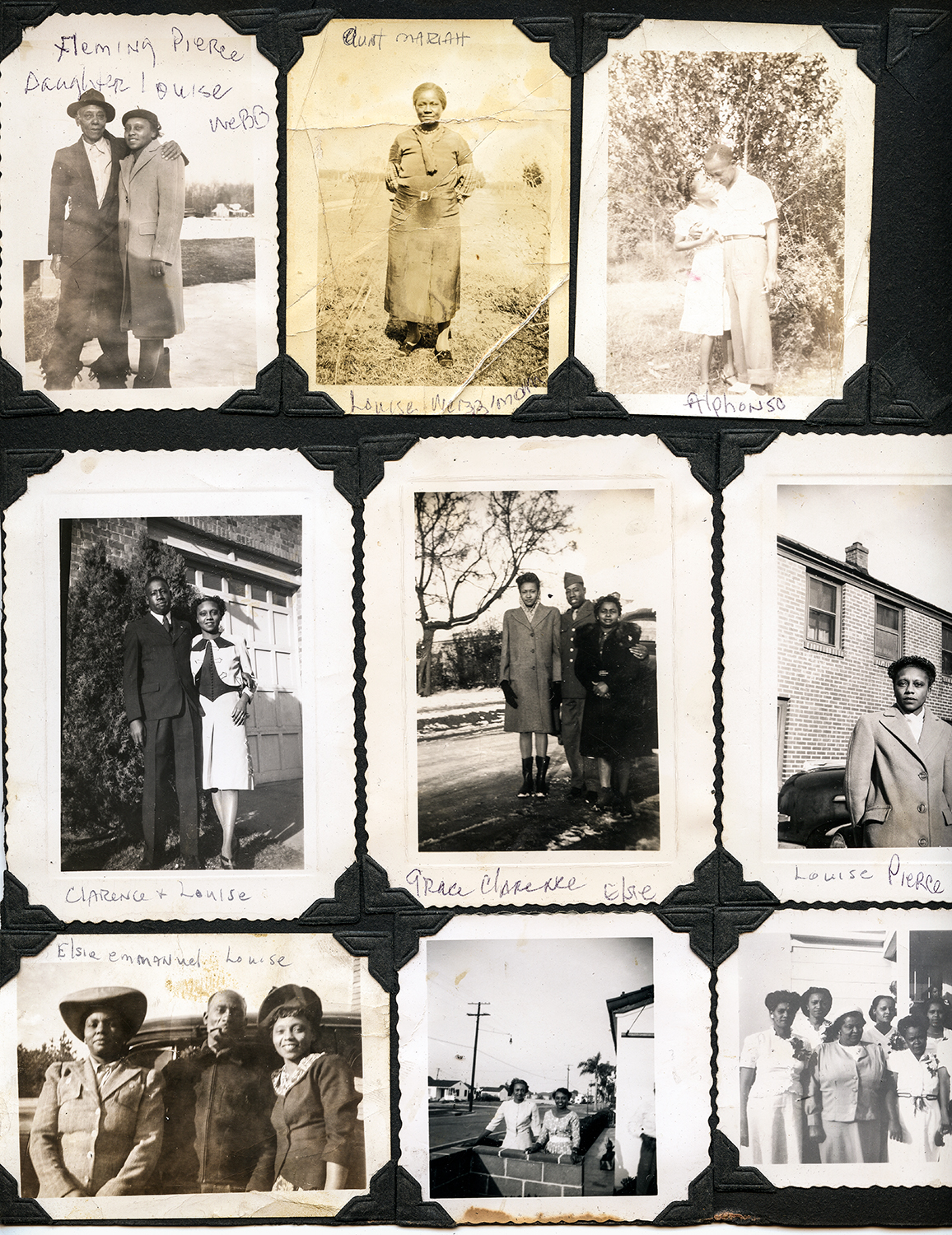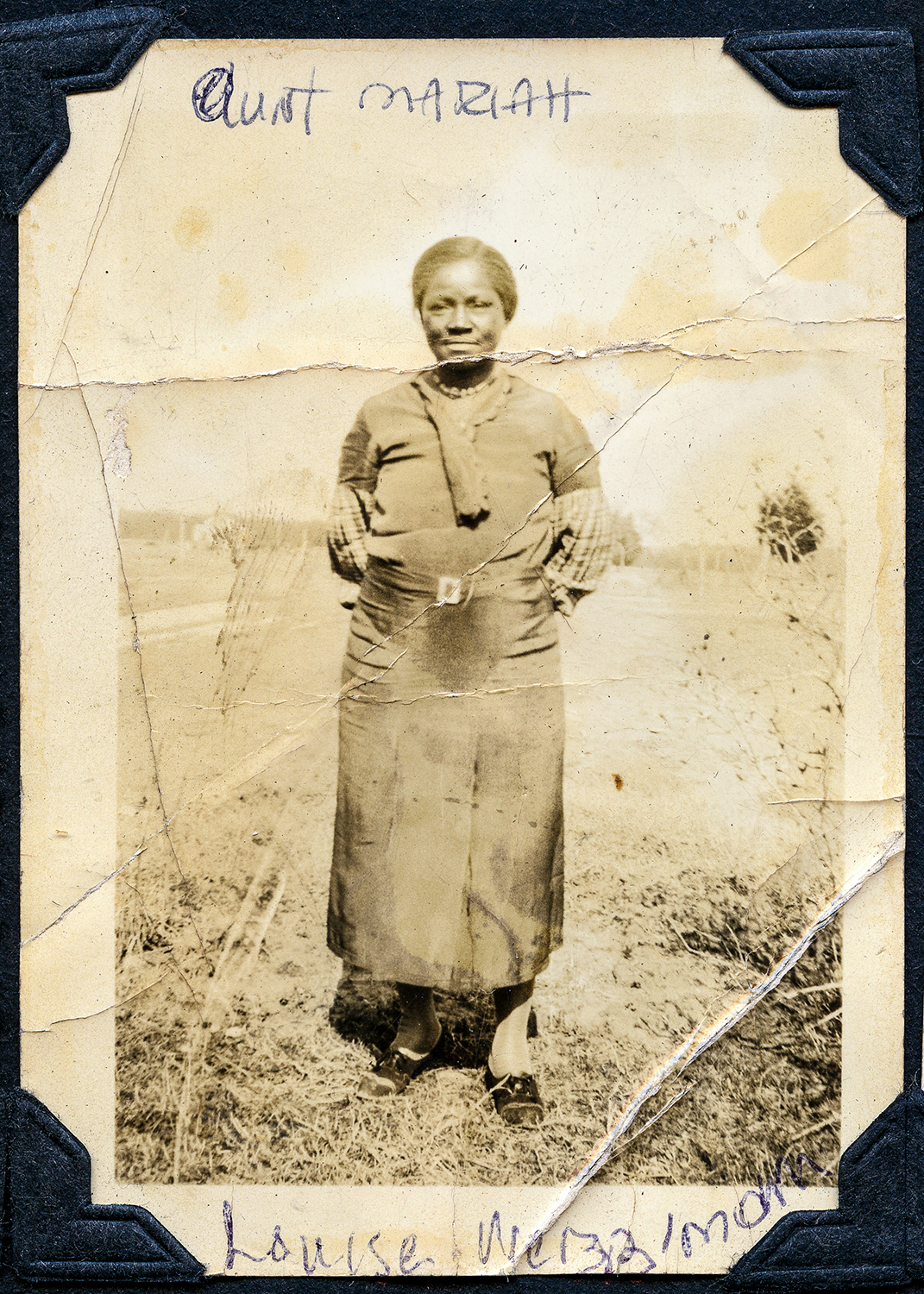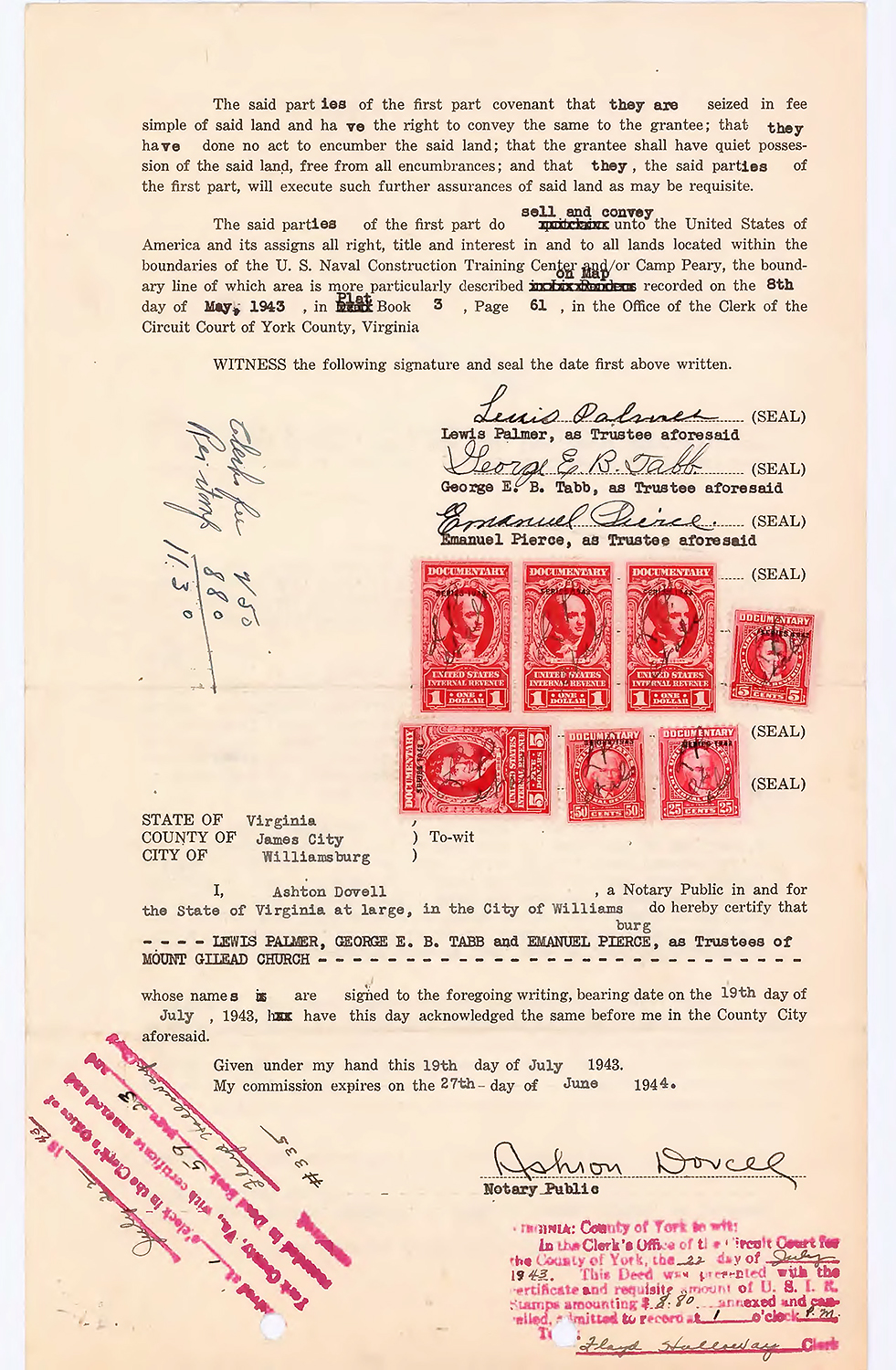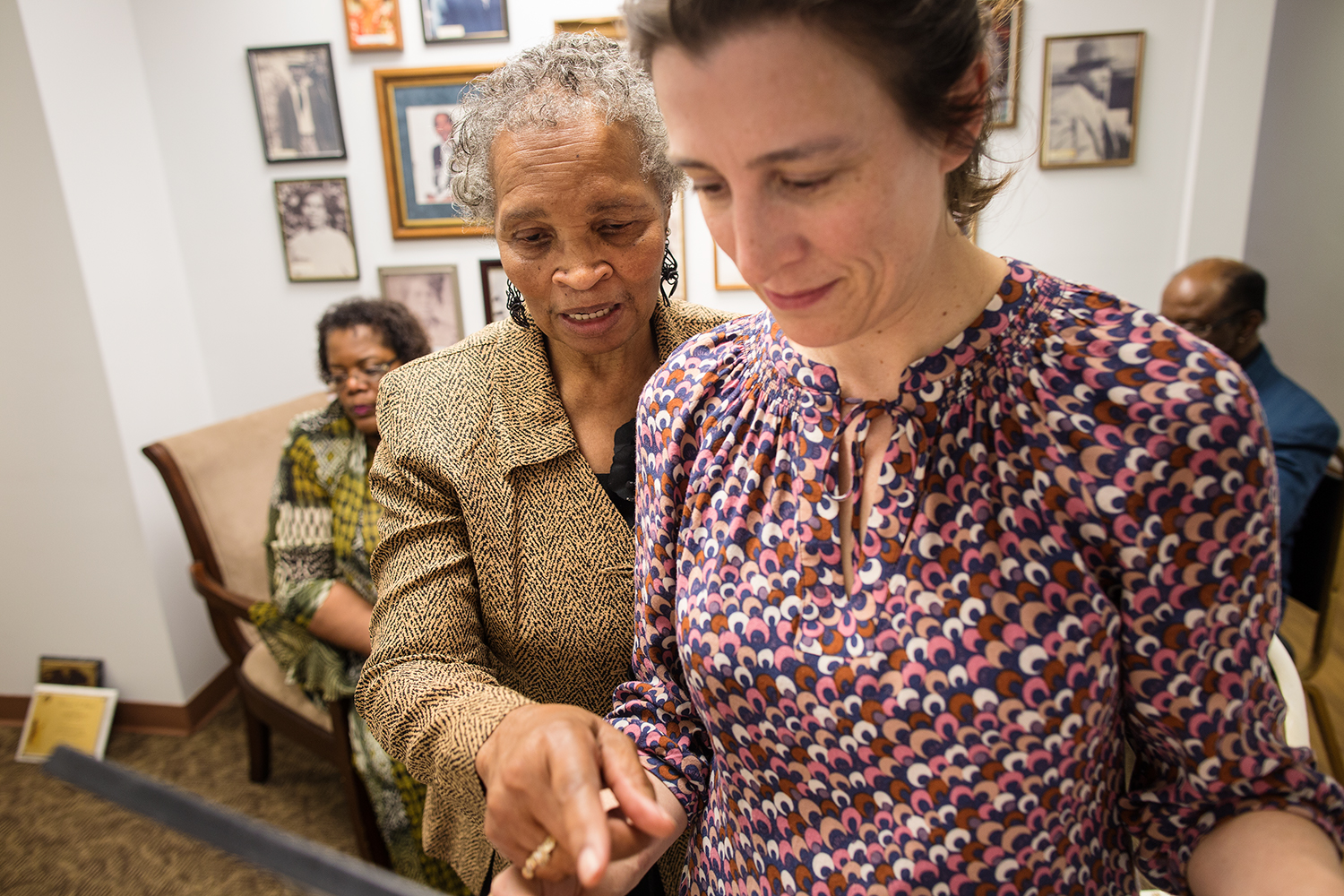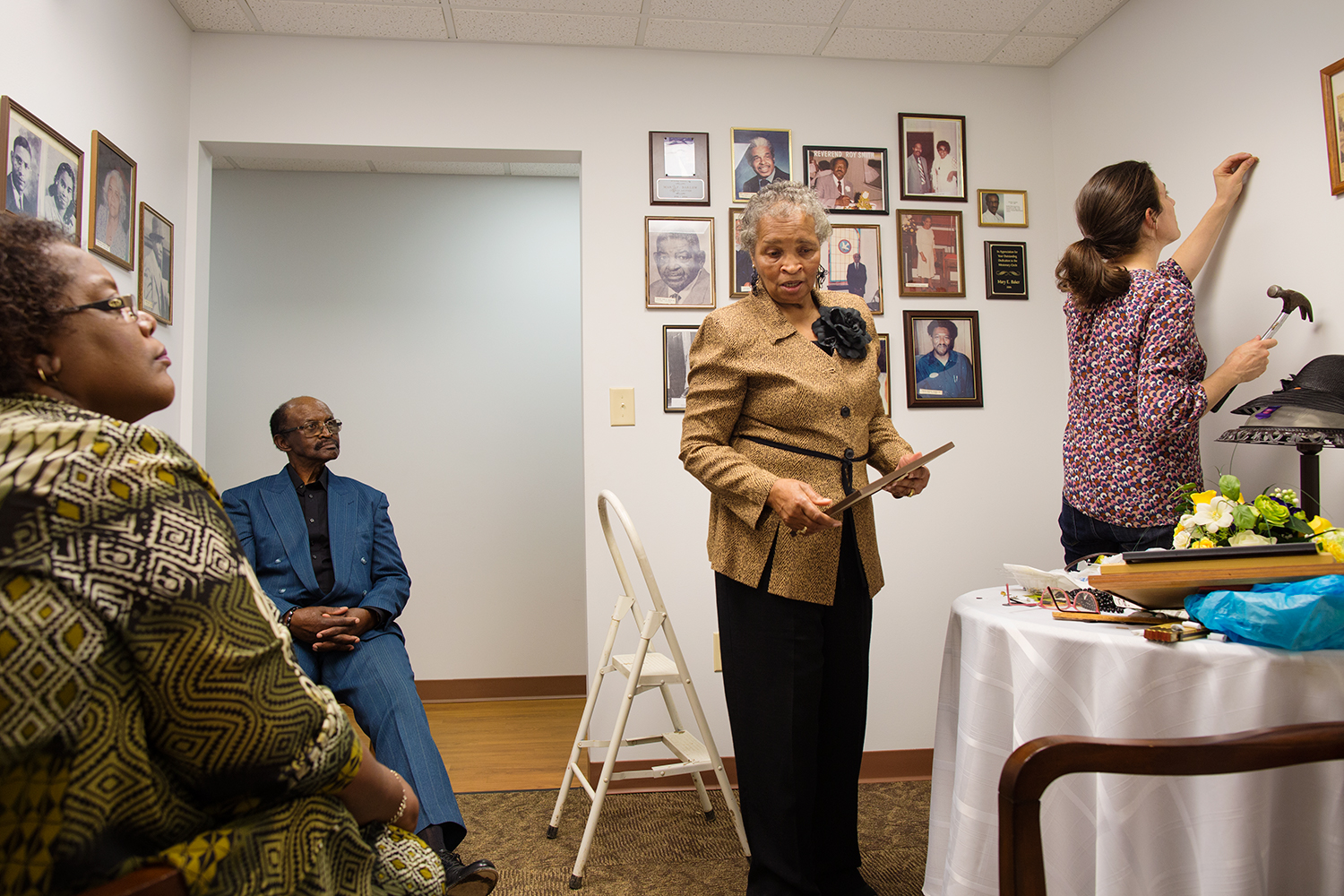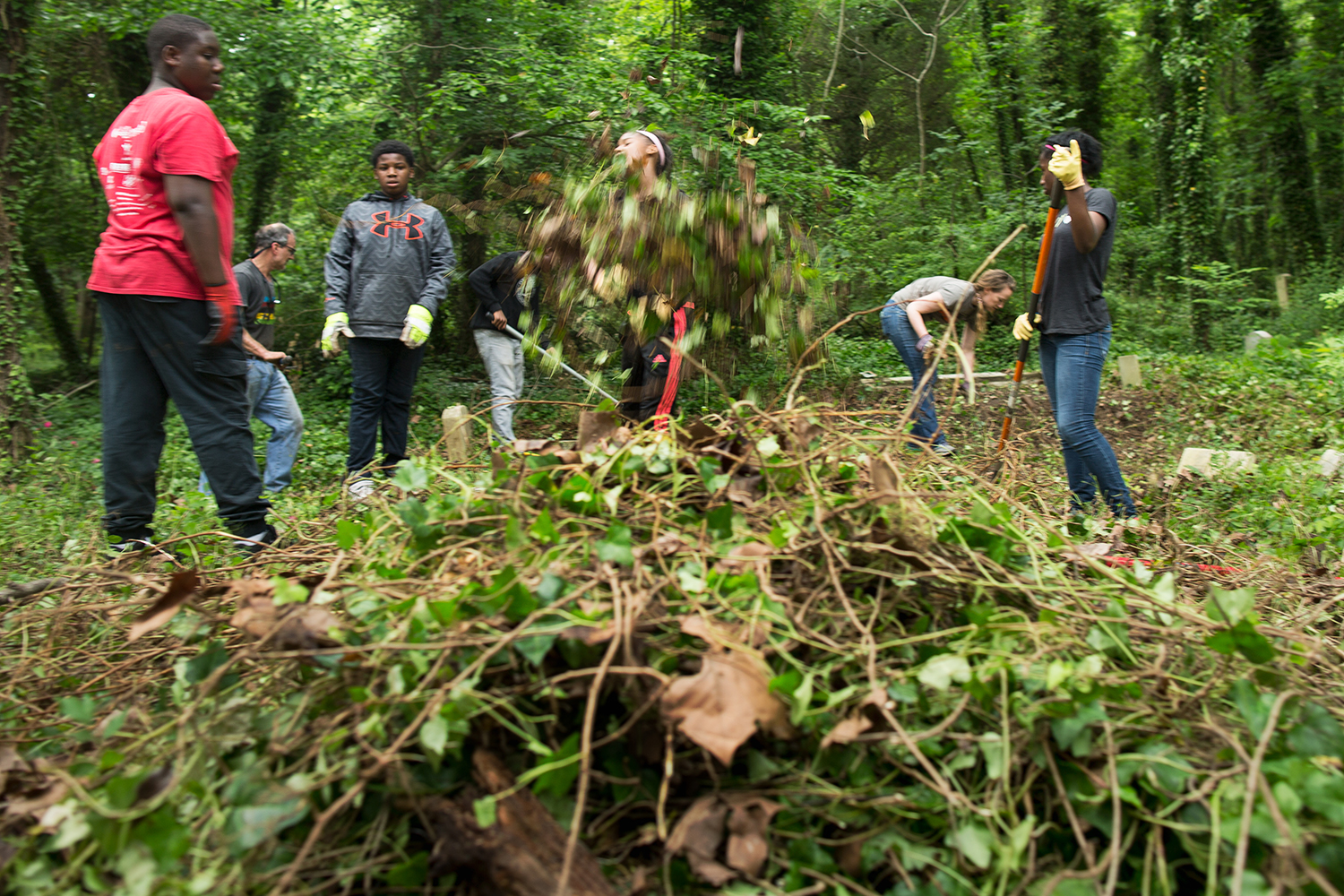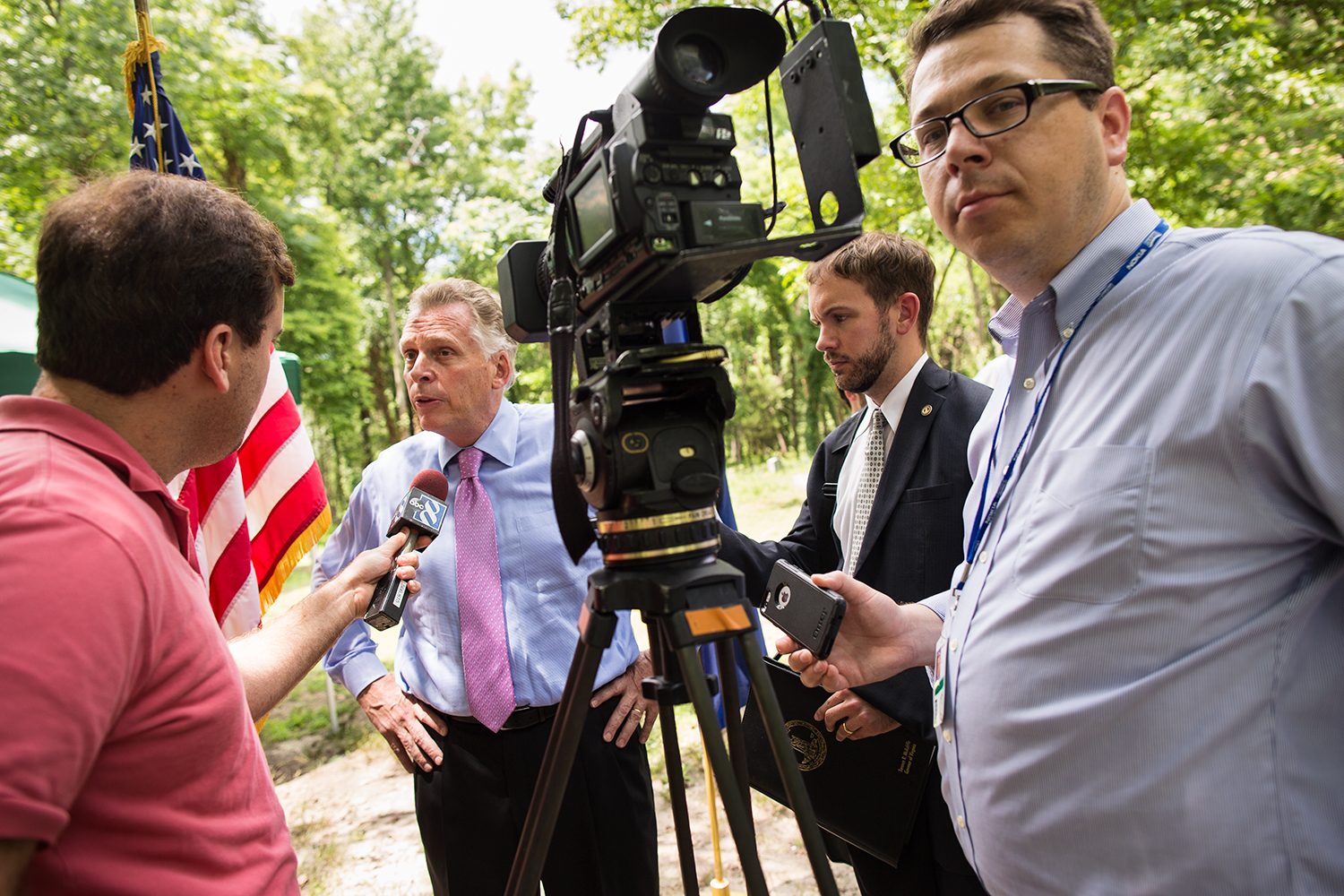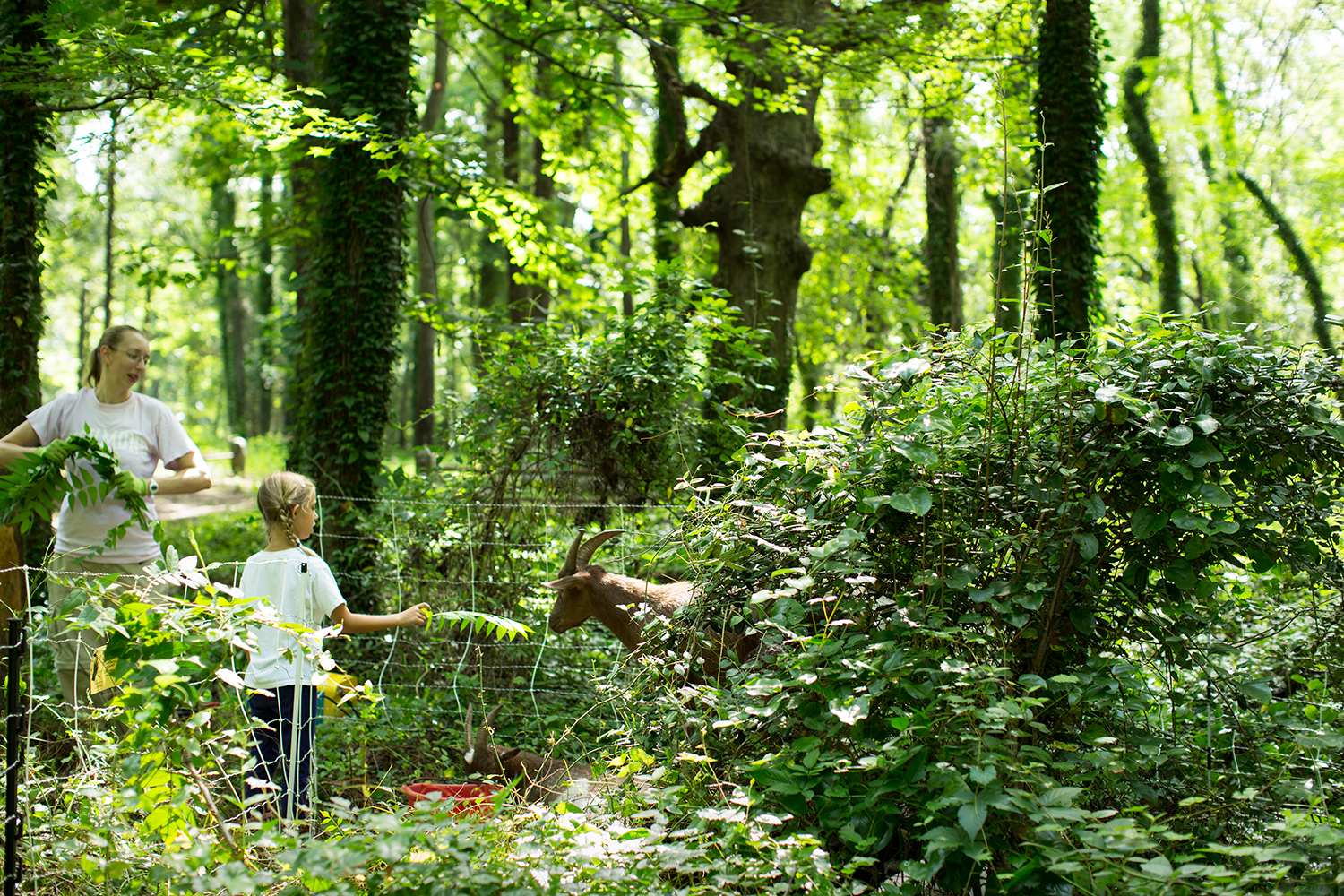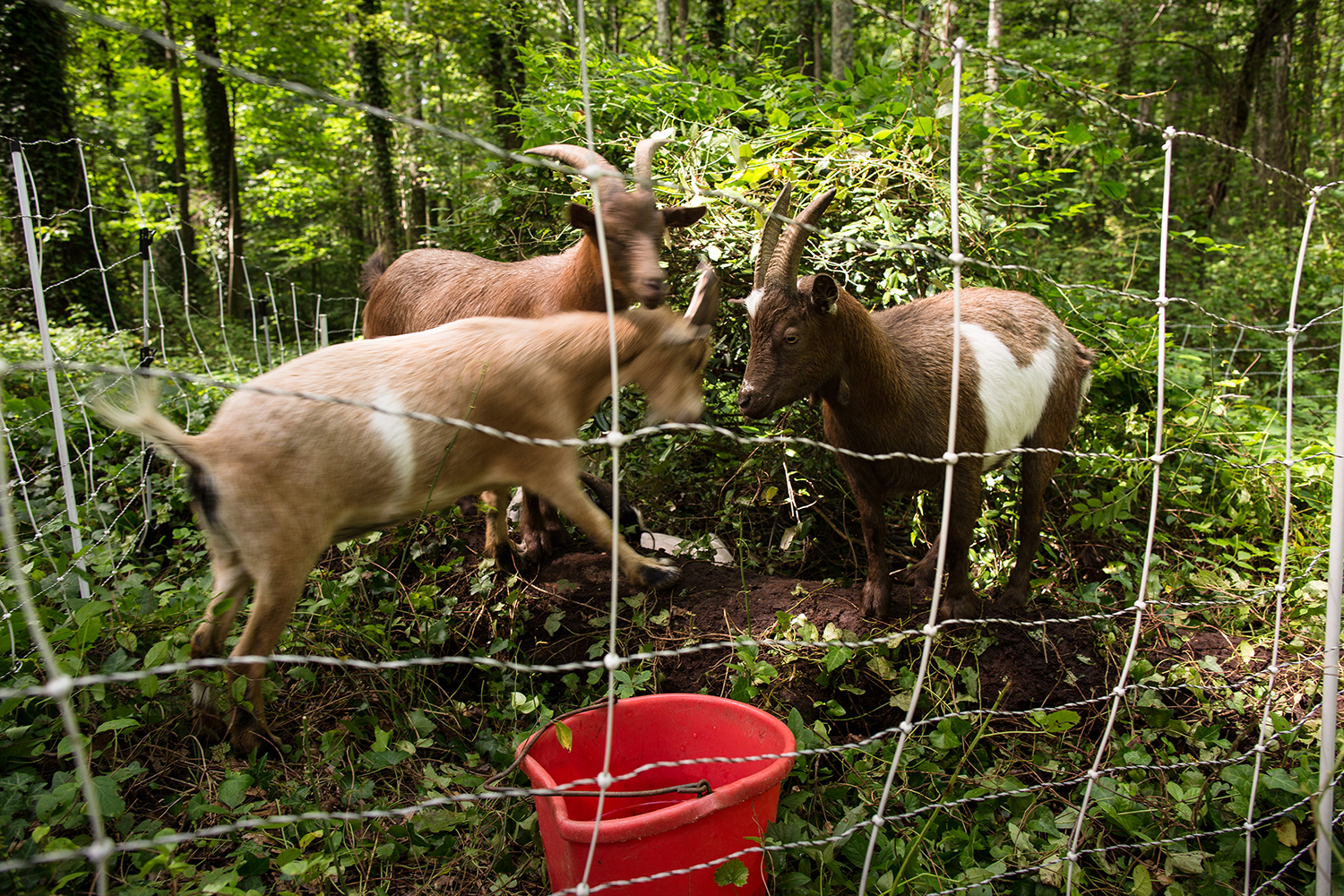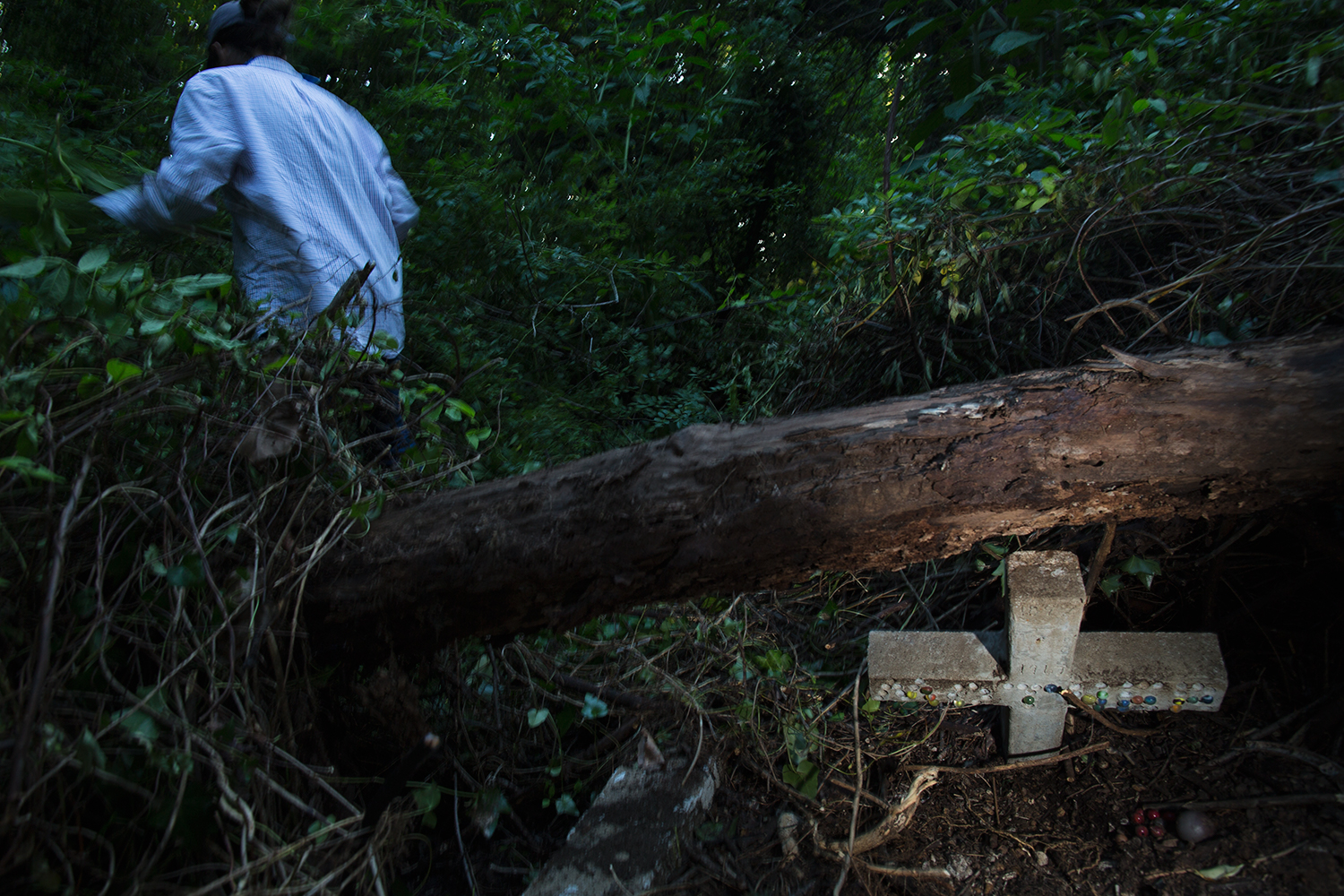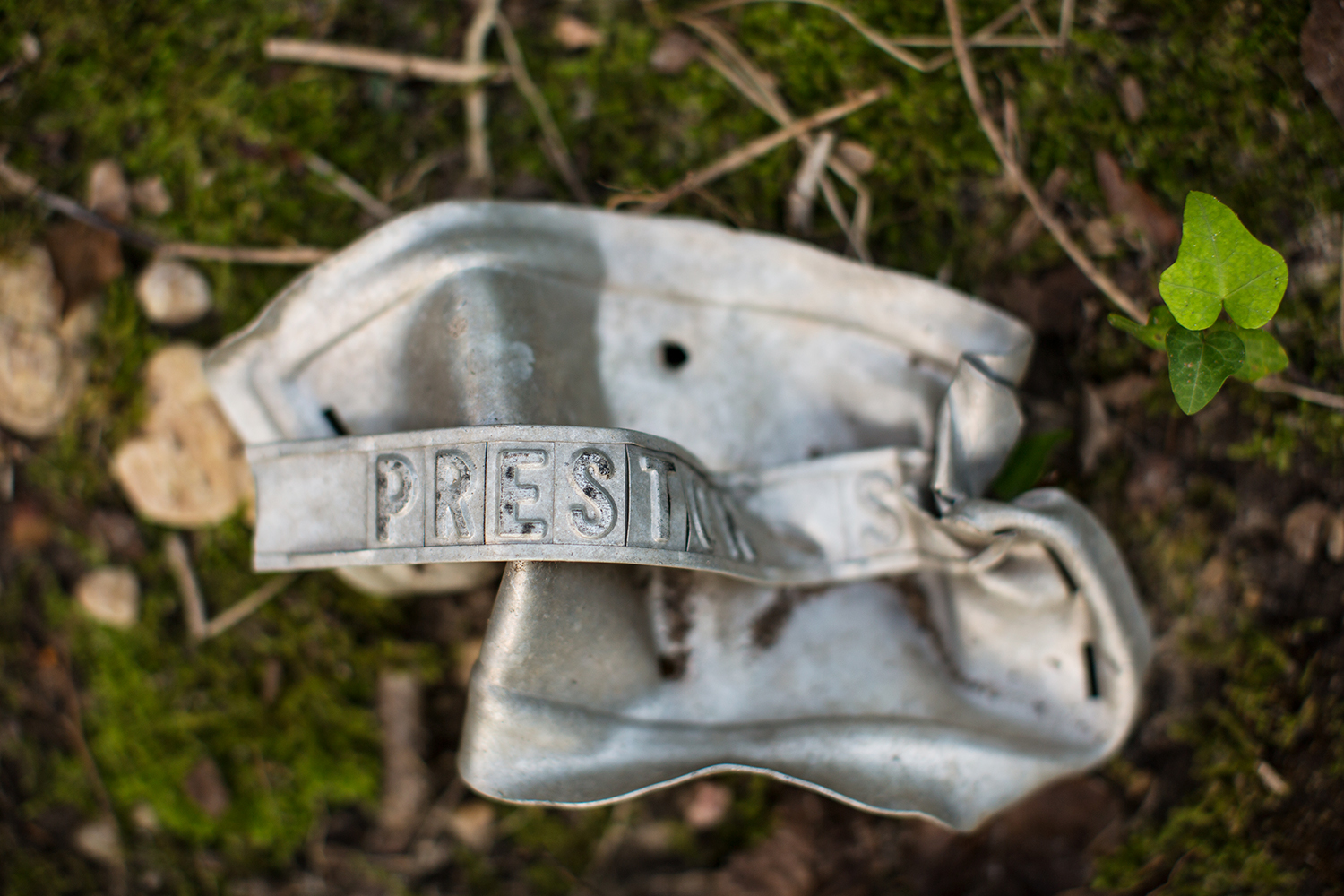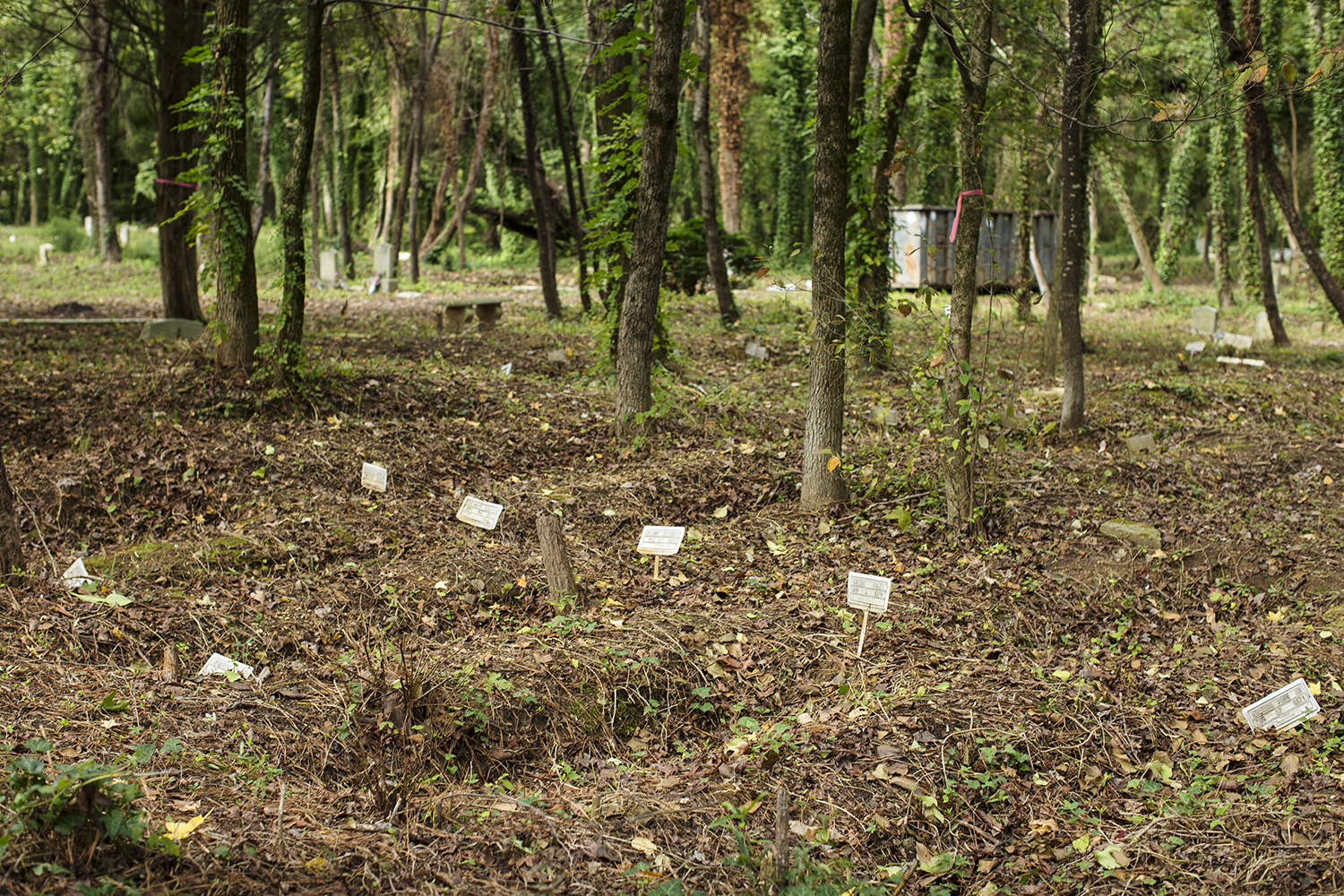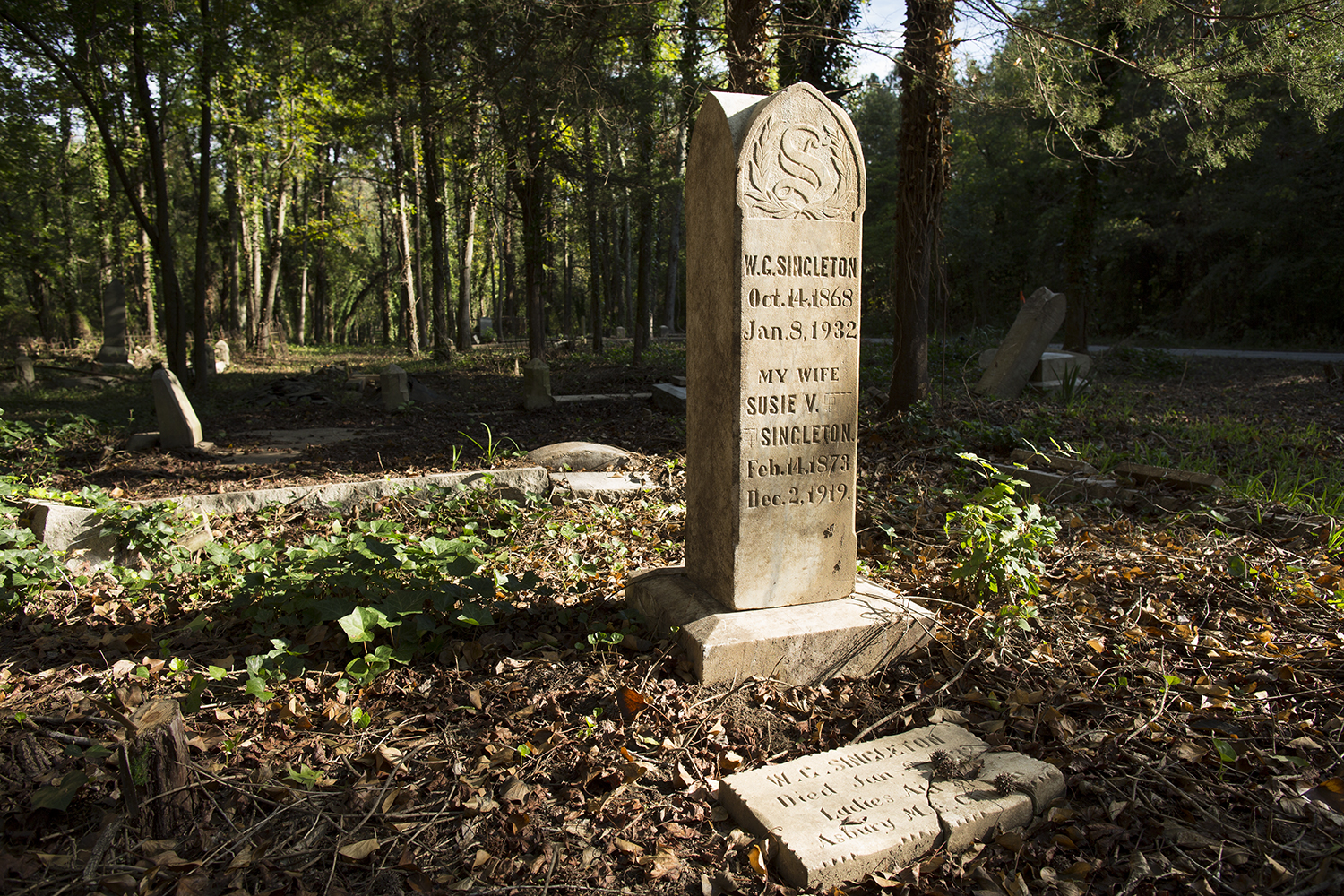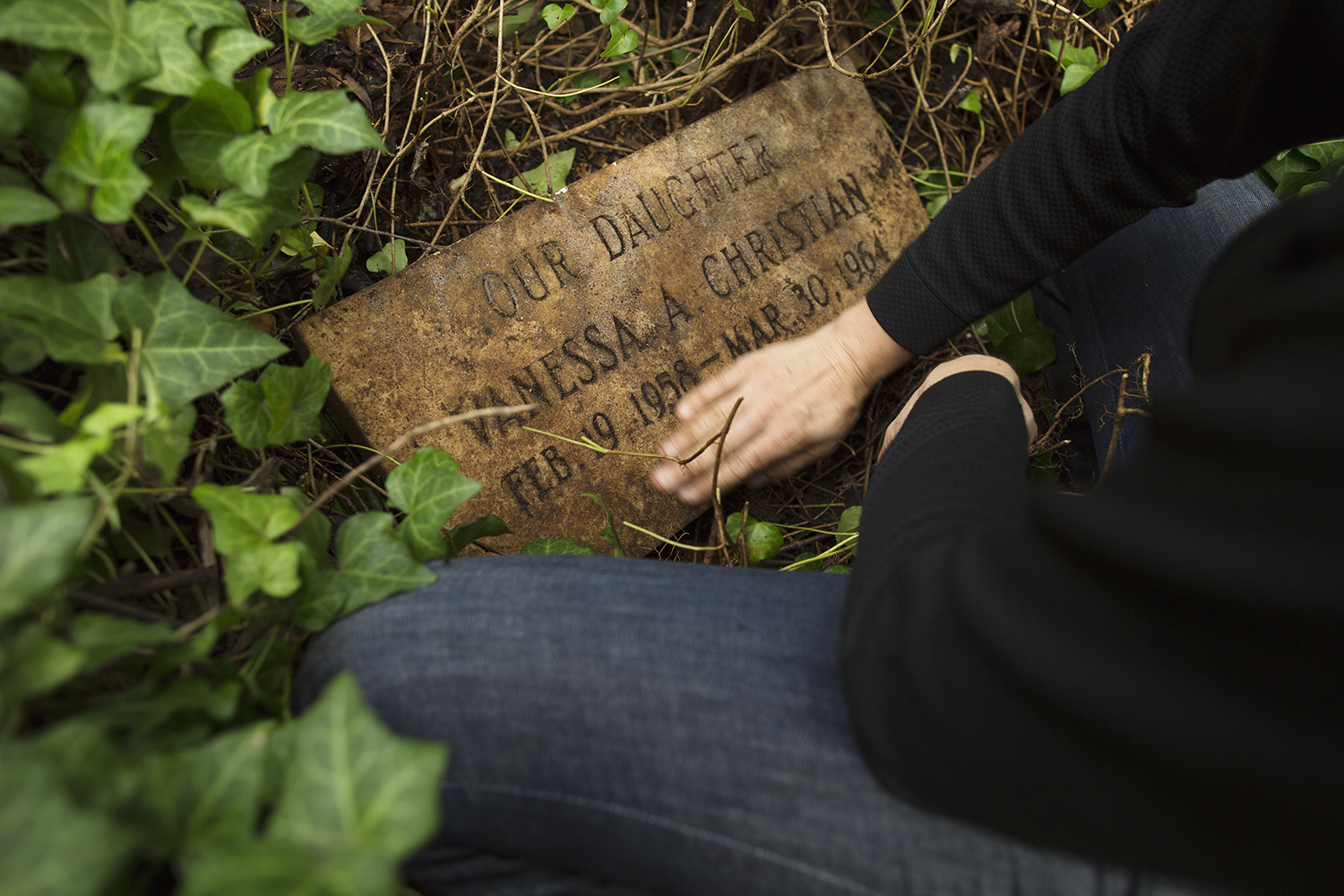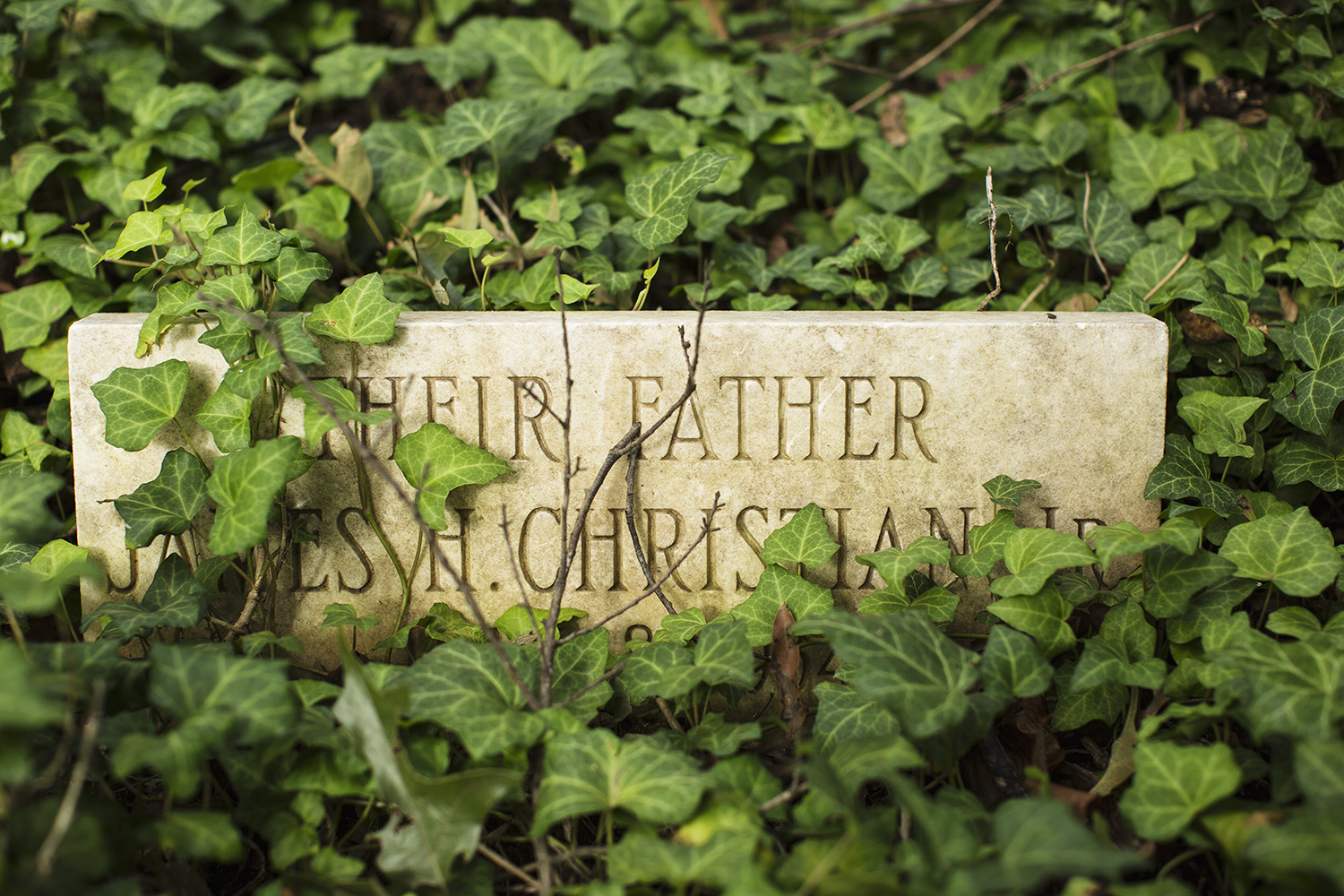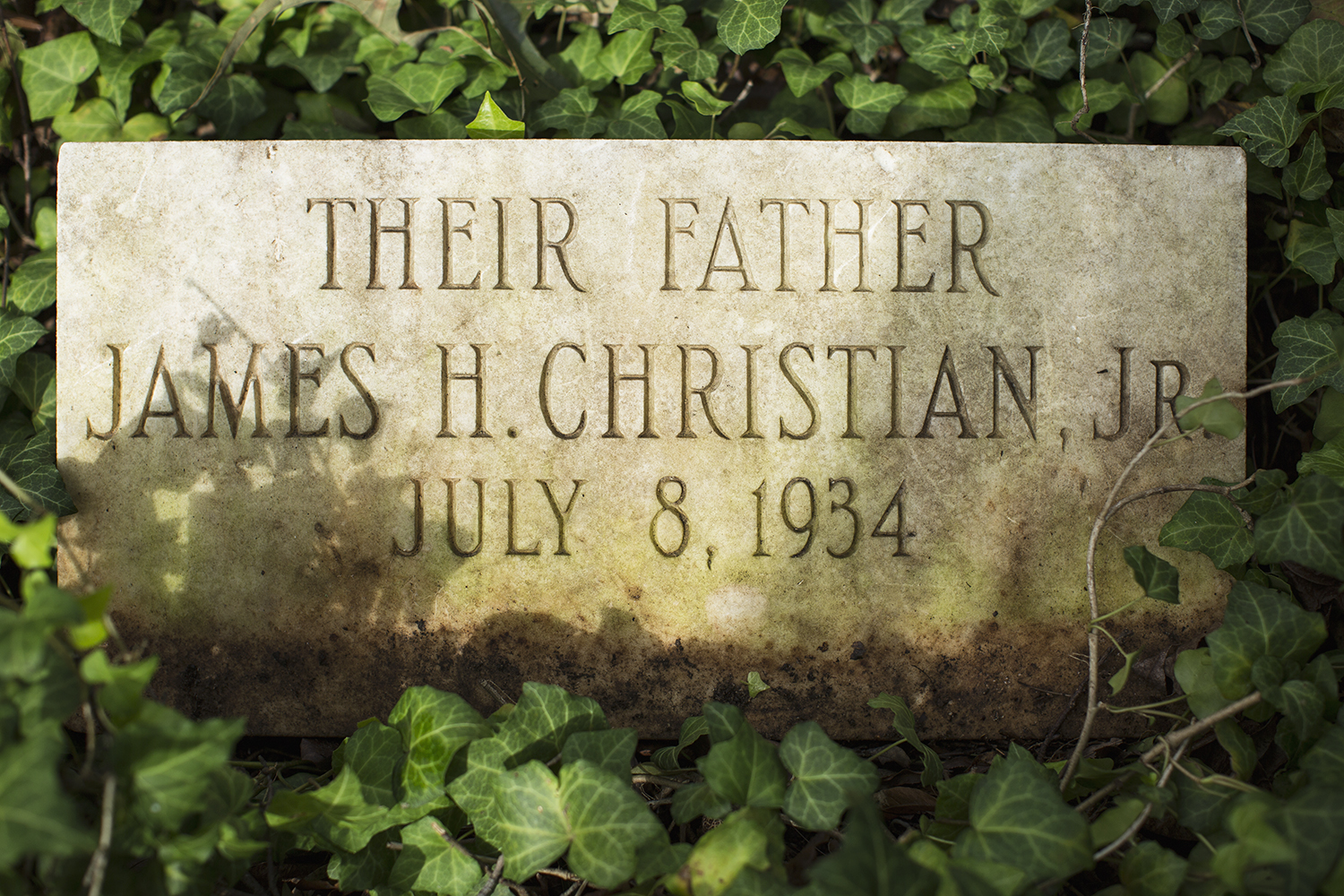I wonder some days—and almost every night as I try to sleep—if we’ll ever collect enough information and pictures to tell a solid story about Magruder and the everyday pioneers who built it. So much of that history has been erased—or was never recorded.
We have found precious pieces of evidence and information in the four years that we’ve been working on Make the Ground Talk. Archivists helped us unearth my great-grandfather Mat Palmer’s Union pension application. From that collection of papers, we gleaned a heap of vital facts, chief among them that Mat had been enslaved and that his last owner was a man named Alexander Maben Hobson.
Our cousin Ann led us to the photo of Mat on the wall of Mt. Pilgrim Baptist Church. Through the Freedom of Information Act, we have obtained government documents relating to the 1942 eviction. At Camp Peary, we visited the graves of Mat and Julia Palmer and other Magruderites at Old Orchard Cemetery.
Scanning her way through thousands of pages, digital and paper, Erin found connections to both sides in the Civil War. We visited the neighborhood where her great-grandparents, descendants of Confederates, lived in Gadsden, Alabama, and found the grave of their (and Erin’s) forebear, “H. M. Stripling Confederate Soldier,” a few counties and one state line east, in Rome, Georgia.
The finding is fantastic. Tracking down each piece of information and visiting each place after months of researching and puzzling, feels wonderful, electric.
For a few moments, we imagine that we’ve cracked the code. Maybe the story will fall into place because we have found this one fragment. And then we settle down.
The finding is rare. Long stretches of nothing—or nothing significant—pass now that we have found the low-hanging fruit, and I gather much of the mid-hanging fruit, too. Digging through archives and attics, poring over microfilm, and poking around cemeteries that just may offer some clues gets old, tedious, frustrating. And although we have found good material, the gaps in the puzzle—of Magruder and the lives of Mat and Julia Palmer—are still larger than the collection of pieces that we have assembled.
Massive questions remain. There is little trace of Julia in the historical record. There are maddening holes in Mat’s story—among them, what made him choose to settle in York County, Virginia, after serving in the Civil War? When did he live in Richmond, as his Union pension application says he did? Why do facts about the “Mathew Palmer” living in Richmond who we find in the census not match up with what we know about our Mat? What have we got wrong? And what have we got right?
In doing all of this hunting and pecking, we have learned a lot about ourselves, about history—Virginian, African American, American—and we have found that others are searching along the same lines. And we have learned one lesson that now sustains us: It’s the looking that matters.
The looking—the process of researching, visiting, interviewing—itself strengthens and affirms our faith in the power of our past and in the people whose stories we’re telling. And we have become part of a diverse and diffuse community of searchers, amateur and professional, gathering textual and physical fragments that allow us to tell truer stories of the American past.
All this to say that our looking goes on and will continue for at least another couple of years. We are assembling the pieces of the documentary film, slowly, with guidance from our advisers, family, and friends. I can’t say when the doc will be complete. I have tried this before and been very wrong. But I will say that we have left Brooklyn and bought a house in Richmond, in Church Hill, where we have rented for two years. We’re committed to this project, to this process, the people and history we are researching, and our new friends, colleagues, and neighbors. We’ll be sending out periodic updates such as this one to give people a better sense of our progress. —BP

